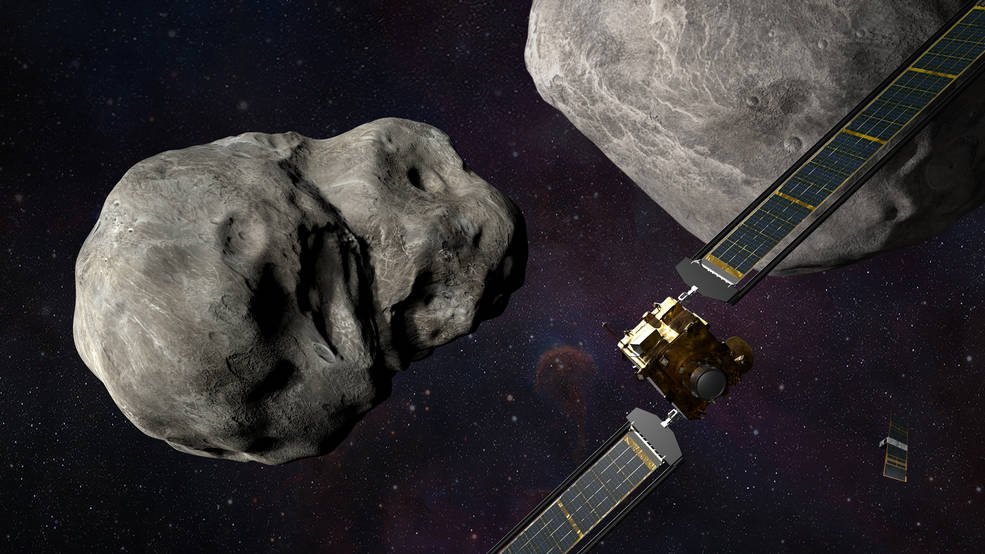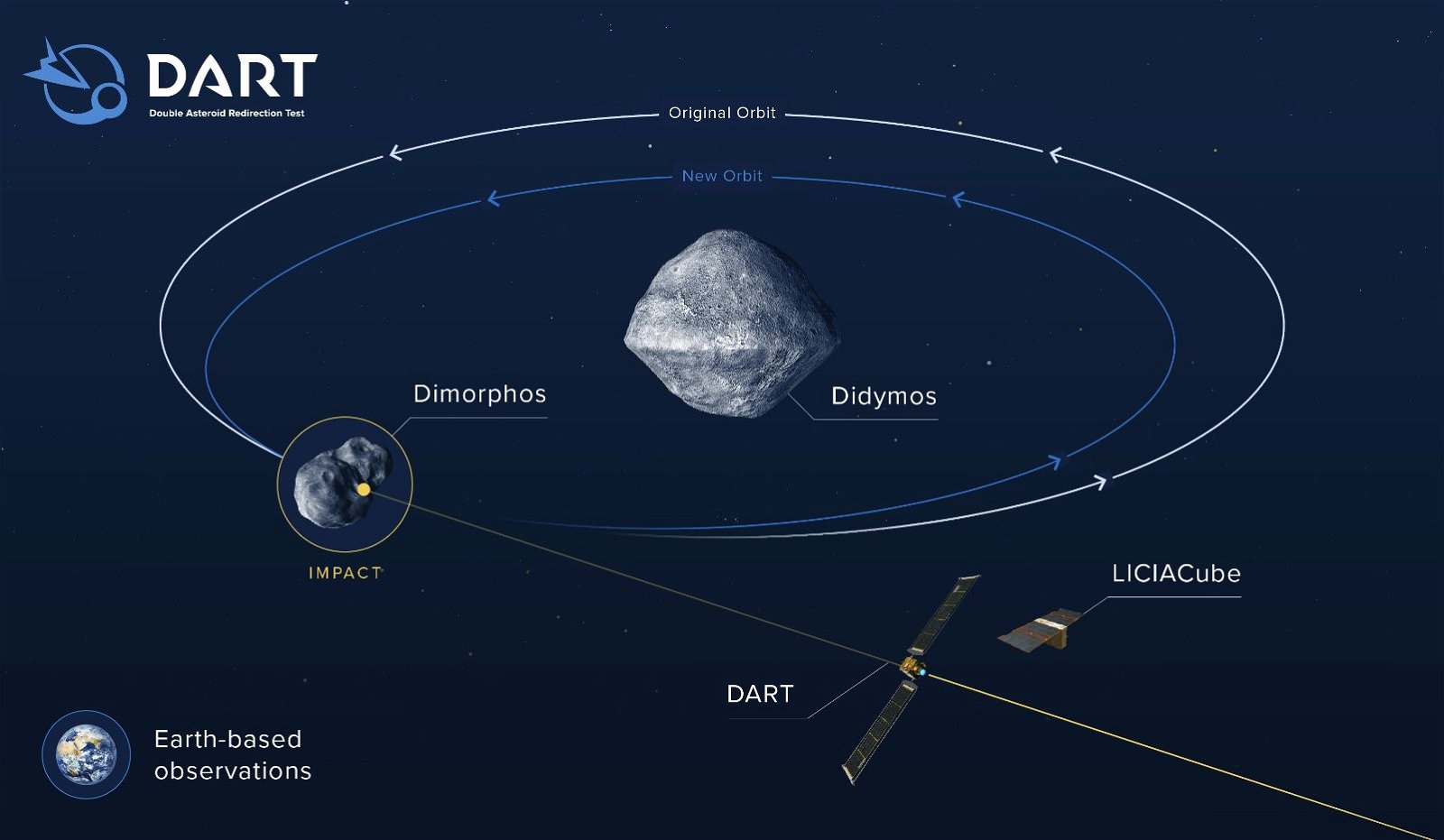

Welcome to this week’s installment of The Intelligence Brief… later this month, NASA will be smashing its DART spacecraft into an asteroid moonlet millions of miles away from Earth. In our analysis, we’ll be looking at 1) the DART mission’s kinetic impactor technology 2) what role the sophisticated DRACO imaging system will play in guiding DART to its target, and 3) what this innovative test means for the future of planetary defense.
Quote of the Week
“If the world is to avoid a collision with nature – one that humanity surely cannot win – we must act boldly on every front.”
– Jose Angel Gurria
Before we get into this week’s analysis, a few of the stories we’ve been covering in recent days at The Debrief include Chris Plain’s recent report on how researchers studying the potentially harmful effects on regular cannabis users now say they have busted the myth of the “lazy stoner.” Elsewhere, I recently covered how astronomers are looking at these ghostly “Einstein Crosses” with hopes of helping resolve the mystery of dark energy. Meanwhile, Kenna Castleberry tells us about a new survey shows a significant difference between U.S. policies on drugs versus how psychiatrists view their safety, which could eventually lead to a push for new classifications in the years ahead. Also, be sure to check out The Debrief’s YouTube channel for Chrissy Newton’s forthcoming interview with astronomer Konstantin Batygin, along with the latest in video reporting, podcasts, and other content.
And with that, it’s now time for us to look at what NASA will be learning in the days as it intentionally crashes a spacecraft into a distant asteroid moon, as an early test of its innovative planetary defense technology.
Collision Course: Why DART Will Be Smashing Into an Asteroid Moon
On September 26, NASA’s Double Asteroid Redirection Test (DART) spacecraft will be smashing into Dimorphos, a moonlet orbiting the asteroid Didymos, in the earliest tests of its kinetic impact technology that, one day, could provide the first line of planetary defense against harmful near-Earth objects.
Dimorphos, a small asteroid that has been categorized as a minor-planet moon and part of a synchronous binary system with its host asteroid, Didymos, was discovered in 2003. Originally given the temporary name S/2003 1 and nicknamed Didymos B, it was given its formal name in June 2020.


In recent days, the U.S. space agency announced that its DART spacecraft had acquired its initial images of Didymos and Dimorphos which, unlike potential Earth impactors DART’s kinetic impact capacities are designed to help mitigate, pose no threat to Earth. Combining more than 240 photos captured by the spacecraft’s imaging system, the Didymos Reconnaissance and Asteroid Camera for Optical navigation (DRACO), the first images are composites representing the Didymos system as seen from a distance of nearly 20 million miles away.
Further enhancements of the DRACO imagery allowed the DART team’s navigation camera experts to locate the Didymos system in the new images, albeit still appearing faintly at their current distance.
The Key Role oF DRACO in Guiding Dart to its Destination
According to Elena Adams, the DART mission systems engineer at Johns Hopkins University’s Applied Physics Laboratory (APL), these first images were a test to gauge the capabilities of the imaging techniques the team will use during later stages of the mission as the spacecraft approaches its target.
“The quality of the image is similar to what we could obtain from ground-based telescopes, but it is important to show that DRACO is working properly and can see its target to make any adjustments needed before we begin using the images to guide the spacecraft into the asteroid autonomously,” Adams said in a statement.


Julie Bellerose, navigation lead with the DART team at NASA’s Jet Propulsion Laboratory (JPL) said that observing the DRACO images for the first time helps the team to “iron out the best settings for DRACO and fine-tune the software,” adding that later this month, the team will “refine where DART is aiming by getting a more precise determination of Didymos’ location.”
Over the last several weeks, the DART team has already successfully conducted a series of earlier tests involving simulations to help plan for guiding the spacecraft’s navigational capabilities in advance of its crashing into Dimorphos. These tests relied on existing imagery that had been collected prior to the deployment of DART and its DRACO cameras, which in the final hours leading up to impact will play a pivotal role in helping steer the spacecraft toward its target.
NASA Plans for a Smashing Success
As DART closes its final remaining distance on approach toward Dimorphos, a series of maneuvers will be performed with help from imagery collected by DRACO that will aid the spacecraft in adjusting its trajectory, ensuring its impact with the moonlet asteroid will be on target. The last of these maneuvers, to occur on September 25, will take place as DART enters its final 24-hour approach toward the asteroid.
Once the maneuvers have been made to correct any trajectory issues, DART will thereafter guide itself autonomously the remainder of its journey toward Dimorphos, eventually crashing into the asteroid while traveling an estimated 4 miles per second.
NASA hopes to glean a wealth of information from the impact later this month. Ultimately, what we are able to learn from DART’s collision with Dimorophos could eventually prove to be vital in the future, should there ever be a need for the use of kinetic impact spacecraft to deflect a potentially deadly asteroid found to be on a crash course with our planet.
That concludes this week’s installment of The Intelligence Brief. You can read past editions of The Intelligence Brief at our website, or if you found this installment online, don’t forget to subscribe and get future email editions from us here. Also, if you have a tip or other information you’d like to send along directly to me, you can email me at micah [@] thedebrief [dot] org, or Tweet at me @MicahHanks.


Here are the top stories we’re covering right now…
- Infodynamics: Discovery of a New Law of Physics Could Help Scientists Predict Genetic Mutations
Researchers say a new law of physics could help predict the occurrence of genetic mutations, in a remarkable development in the research field known as infodynamics.
- A New Survey of U.S. Psychiatrists Suggests that Some Psychoactive Drugs Need to be Reclassified by the DEA
A new survey shows a significant difference between U.S. policies on drugs versus how psychiatrists view their safety, which could eventually lead to a push for new classifications in the years ahead.
- Ghostly “Einstein Crosses” Spotted in Deep Space Could Help Resolve Dark Energy Mystery
Despite their striking appearance, Einstein Crosses aren’t evidence of distant alien megastructures. However, they could help solve the lingering mystery of dark energy.
- Messages Carried by Ripples in Space and Time
Could humans one day detect artificially-produced bursts of gravitational waves, used for communication among advanced technological civilizations?
- Researchers Bust the Myth That Cannabis Users Are Lazy
Researchers studying potentially harmful effects on regular cannabis users say they have busted the lazy stoner myth.
- NASA’s Watts on the Moon Challenge: Seven Companies Advance to the Next Level
NASA’s Watts on the Moon Challenge has reached the next level of Phase 2, as seven companies are now moving forward with innovative designs.
- As Hydrogen Leak Sets Back Artemis I Launch, Here’s What’s Next for NASA’s Moon Mission
NASA’s Artemis mission saw significant setbacks on Saturday, after engineers were unable to resolve a hydrogen leak in an interface connecting the liquid hydrogen fuel feed line with the Space Launch System (SLS) rocket.
- Was Einstein Wrong? Dark Energy Study Yields Surprising Discoveries About Nature’s Most Mysterious Forces
A new study on dark energy examines whether our understanding of gravity and its influence throughout the universe is incomplete.
- Could Augmented Reality Change How We Read Paper Books?
A new augmented reality technology study recently examined how the technology may change the future of printed books and publishing.
- Traveling at 8% of the Speed of Light, the Strange Celestial Object S62 is the Fastest Ever Seen
In this week’s Intelligence Brief, we look at a mysterious object traveling at 8% of the speed of light, the fastest object ever observed by astronomers.
- The Paradox of Fermi’s Paradox
“Where is everybody?” quipped Enrico Fermi, progenitor of the Fermi paradox. Now, Christopher Mellon examines an updated, similar concept he calls the “UAP paradox.”